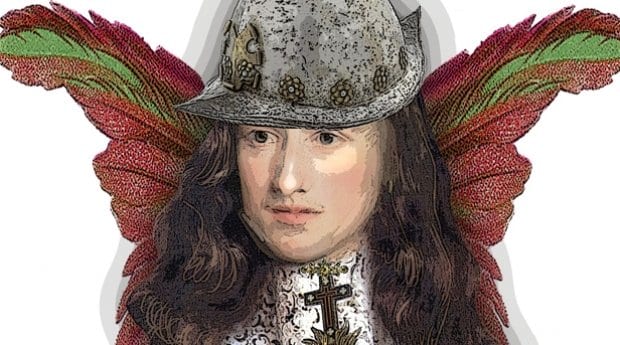In 1600, just before taking her final vows, 15-year-old Catalina de Erauso escaped from a convent in northern Spain. In a nearby chestnut grove, she transformed her blue bodice into breeches and her green petticoat into a doublet and hose. She threw away her habit. When she cut her hair, the effect was complete: she looked just like a boy.
The disguise helped her travel and find work without arousing much suspicion; few people had much freedom, but men had more than women (no surprise there). Despite having seen little of the world — she’d been in the convent since age four — de Erauso made her way from town to town, evading her searching family (which was large and wealthy) before finally getting a job as a ship’s boy on her uncle’s galleon (he didn’t recognize her).
She made her way to South America in 1603, where her adventures in male attire would make her a folk hero. Decades later, between 1626 and 1630, she wrote a memoir. It wasn’t published until 1829, but her story spread in the meantime. While some doubt whether she actually wrote it, the memoir could be one of the earliest autobiographies of a woman. I was fortunate enough to find a copy of Lieutenant Nun: Memoir of a Basque Transvestite in the New World, translated by Michele and Gabriel Stepto.
Many of de Erauso’s adventures have the same flavour: she travelled to a city, had a gambling-related disagreement, killed someone, hid in a church, was arrested and then escaped to the next city. She almost invariably blamed bad luck (apparently it’s bad luck that made her kill so many people). Lather, rinse, repeat.
Spain had been colonizing South America for many years, killing indigenous people and shipping gold and silver back to Spain. De Erauso served a stint in the military, and for her accomplishments in the conquest of Chile, she was promoted to lieutenant. Later, she accidentally killed her brother in a duel. She also saved a woman from a murderous husband.
She was in trouble wherever she went, and when a bishop rescued her from a particularly difficult jam, she told him her life story and her true sex. The revelation made her famous. In 1624, she returned to Spain and the king granted her a pension. That same year, she met the pope, who, after hearing her story, gave her permission to keep wearing men’s clothing.
There is some debate over whether she was a lesbian, in part because her memoir rarely describes her thoughts or feelings, including those pertaining to physical attraction. There’s certainly no explicit mention of sex.
She had plenty of opportunity — some employer, bishop or mother was always trying to get de Erauso to marry a mistress, daughter or niece — but only in a few places does her memoir describe attraction for a woman or a situation that might, if read in a certain way, turn out to be sex.
There’s one particularly suggestive instance. Early in her travels, she was fired from a job by Diego de Solarte, a wealthy merchant, “the reason being that there were two young ladies in the house, his wife’s sisters, and I had become accustomed to frolicking with them and teasing them — one, in particular, who had taken a fancy to me. And one day, when she and I were in the front parlor, and I had my head in the folds of her skirt and she was combing my hair while I ran my hand up and down between her legs, Diego de Solarte happened to pass by the window, and spied us through the grate.”
She was sort of a Spanish cowboy in the South American version of the Wild West. It’s hard to say whether the above episode is just an instance of her playing her part well — a rough, ready and libidinous male — or of genuine attraction to the same sex.
Following her visit to the pope in Rome, the memoir ends with a brief account of a trip to Naples in 1626. Little is known about her life after that point, except that in 1630 she headed to Mexico using the name Antonio de Erauso. I can already hear the sickly sound of bodies piling up.
History Boys appears in every issue of Xtra.


 Why you can trust Xtra
Why you can trust Xtra


